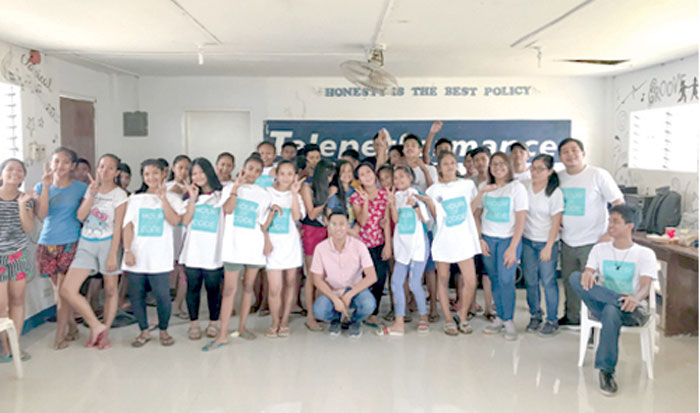Microsoft Philippines, in partnership with Gawad Kalinga, holds the ‘Future Ready’ initiative with the students and educators of Sitio Ibabaw ng Gabihan School in Tanay, Rizal
In an effort to close the digital skills gap, Microsoft has kicked off Future Ready, an annual initiative run in partnership with nonprofits and schools to generate interest amongst students to learn computer science and empower teachers with skills to teach computer science.
Launched in conjunction with Computer Science Education Week, Microsoft empowers close to 700,000 youth – particularly from underserved communities – with opportunities to pursue their passion in computer science and more than 26,000 educators to teach high-quality and inclusive computer science across Asia Pacific over the next year.
“Microsoft believes that education is essential to personal and country-wide economic growth,” said Attorney Raul Cortez, Corporate External & Legal Affairs Director of Microsoft Philippines. “We are keen on extending necessary help needed by educators to ignite students’ interest in computer science. Computational thinking allows the youth to gain technical knowledge and develop creativity, critical thinking, and problem-solving skills – essential attributes for the jobs of tomorrow.”
Computer Science Education Week: Introducing Computer Science to all Youth in Asia Pacific
Future Ready aims to increase access to computer science as Microsoft drives workshops for 2,000 educators to teach them how to facilitate engaging and inclusive computer science classes to more than 200,000 youth.
For the fourth year in a row, Microsoft has partnered with Code.org to provide young people the opportunity to learn the basics of coding through its game-based learning program, Minecraft Hour of Code Tutorial: Voyage Aquatic.
Beyond an hour of code is the Asia Pacific’s Next Top Coder, a free online competition led by Empire Code in partnership with Microsoft and Lenovo. Students between the ages of 13 and 19 created a Minecraft world enhanced with code that reflects a period of time in history, using Minecraft: Education Edition and Microsoft MakeCode for Minecraft.
“Digital transformation in our classrooms allows us to achieve a future-ready workforce,” said Cortez. “Future Ready aims to achieve three objectives: introducing the basics of computer science, providing hands-on coding experience, and facilitating access to role models who help connect in-class experiences to real-world concepts.”
Providing Youth with Long-Term Opportunities to Pursue a Career Enabled by Technology
Microsoft, through its latest collaboration with Gawad Kalinga, empowers the community by providing grants and technologies to build the capacity of nonprofits to teach high-quality computer science education to underserved youth via its digital skills program. The campaign also includes initiatives to teach an hour of coding on Minecraft for both students and out of school youth based in Metro Manila and the Visayas region.
Four confirmed Microsoft Education Ambassadors also conducted Hour of Code in the Mountain Province, Cavite, Pasay, and Leyte, in an effort to create a sustainable community of passionate individuals who are advocates of teaching with technology. Ambassadors use various programs and applications and are then tasked to adopt a school from their province to train other teachers on the use of technology in facilitating better classroom discussion and learning.
“As we embark on our mission to help people achieve more through technology, these kinds of efforts in schools and communities ensure that we reach as many individuals as possible,” says Cortez. “The future is one where people with access to and knowledge of technology are able to reach their full potential. We, at Microsoft, believe that we play a vital role in enabling educators, students, and workers to become future-ready and we will continue to lead and participate in projects that promote such empowerment.”
To find out more about Microsoft Future Ready, visit https://www.microsoft.com/en-us/education/educators/stem.

